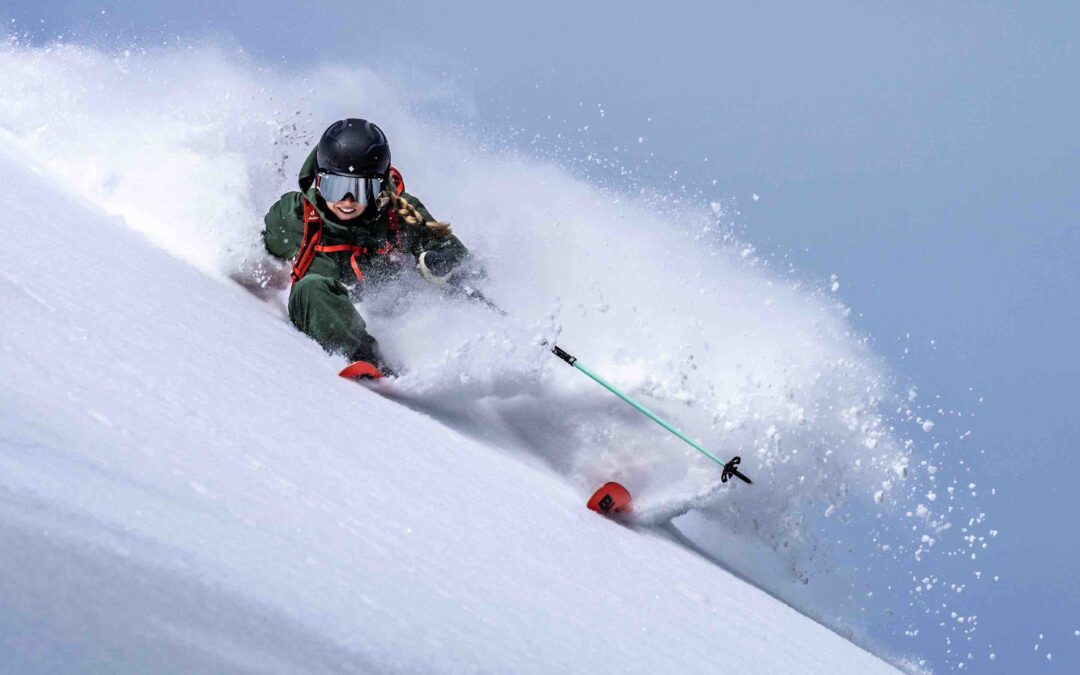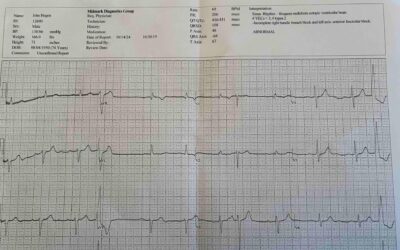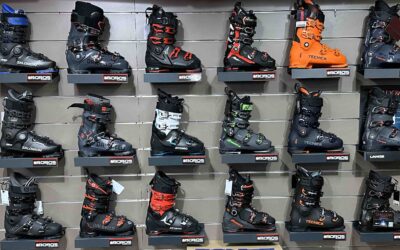
Every few years I take a deep dive into the women’s ski market, partly to re-visit the latest trends in the overall women’s field and partly to identify brands that have done the most to differentiate their women’s models from their unisex counterparts. This week’s Revelation isn’t a soup-to-nuts slog through every brand’s women’s collection, but a snapshot of the big picture and details about the brands that have done the most to integrate uniquely female features in their 2024 women’s models.
I’ve included in this monograph a few links (below) to prior Revelations where I go into deeper detail. There’s a trio of basic information articles penned in October of 2017 that are still relevant, and a cluster of reviews from 2020 that include many models still being sold today. What these flashes from the past reveal is that the American women’s ski market, both in general and by brand, has settled into a relatively stable pattern.
https://realskiers.com/revelations/the-best-womens-skis-of-2020/
https://realskiers.com/revelations/womans-world-part/
https://realskiers.com/revelations/womans-world-part-ii/
https://realskiers.com/revelations/womans-world-part-iii/
The Big Picture
- The All-Mountain East category (85mm-94mm waist) remains by far the most important genre in the women’s field. It’s the most diverse and boasts most of the best all-mountain models. The Frontside category (75mm-84mm) is also a vital sector as it includes most less-than-expert models over a wide range of price points.
- The wider the ski, the less likely it is to be technically differentiated from its unisex twin. There are a couple of notable exceptions, but most women’s models over 100mm (waist) are unisex clones as the desirable traits in a wide off-trail ski merge with those of the lighter weight female skier.
- Women’s Technical models are largely absent from the U.S. market, a drought that has persisted for many years. As American women get better, the allure of the off-trail exceeds the urge to pull more G’s on groomers. So, the best skis made for women who want to stay on groomers are all but invisible on this side of the pond. Women’s Technical models are among the most likely to be modified specifically for female skiers, but they just can’t find a following in the U.S.
- Among the women’s models that are modified to better match a lighter skier, by far the most common alteration is a reduction in, or total elimination of, the amount of metal in the construction.
The Masters of Light
No brand has done more to optimize skis for the on-trail female skier than Head. It was about 10 years ago that Head decided to capitalize on its investment in Graphene by creating an entire line of women-specific models without reference to a single unisex ski. (No other brand has come close to this degree of separation between its men’s and women’s models.) The Joy series has since been through several rounds of re-design; the original synthetic Koroyd honeycomb core has been replaced with wood, a significant upgrade, but that’s just the beginning.
This year, Head went beyond sourcing the lightest materials extant for Joy skis; the Austrian brand also made major changes to the tip geometry (going slimmer) and overall sidecut (less shape); softened the flex in the ski mid-section to even out pressure distribution; and solved a problem that has always bedeviled women in small boots: it created a plate that compensates for the exaggerated ramp angle created by putting a short boot sole in an adjustable system ski (one that includes its own binding). This may not sound like a big deal, but if you have a size 22 or size 23 boot sole, you have been laboring with a handicap that Head has now eliminated.
One of the many lessons Head learned in the process of developing the Joy series is that solutions that work for skis around 75mm underfoot don’t work so well for skis over 85mm at the waist. The original Big Joy (110mm) and Great Joy (98mm) were amazing skis, phenomenally stable despite their lightweight composition, but they didn’t sell; today’s Joy series tops out at the 85mm Total Joy. The Head women’s collection switches to the off-trail Kore construction for women who spend most of their time off-trail.
There’s no question that Head has invested more in making genuinely women-specific skis than any other brand, but the sales leader in women’s skis, at least in the U.S., is undoubtedly Blizzard. For a stretch of four or five years, the Blizzard Black Pearl 88 was the number one selling ski in America, men’s or women’s, a feat unlikely to be repeated anytime soon. The Black Pearl 88 was originally indistinguishable from a unisex Brahma 88, and it still shares the men’s skis dimensions and some construction similarities, but its guts are lighter due to the elimination of most of the metal (a Titanal mounting plate remains) and the substitution of lightweight carbon. The Black Pearl 88 has a slimmer sidekick, the BP 82, which in this erstwhile product manager’s opinion is an even better choice for most women looking for an all-terrain ski, as its more slender chassis makes for cleaner, quicker turns on groomers.
Blizzard’s proven ability to find just the right modifications to a unisex ski to make a superb women’s ski gets another chance to shine this season with the debut of its overhauled Sheeva collection of off-trail models, the distaff companions to the new Rustler series. To “feminize” the Sheevas, Blizzard removed a patch of Titanal underfoot, substituting a shock-absorbing composite material that makes the Sheevas less burly and easier to foot-steer in choppy crud.
Blizzard’s boffo success with the Black Pearl is probably what inspired sister brand Nordica to upgrade its off-trail women’s collection, the Santa Anas, a five-model family that gradually trims its top metal laminate as the models grow wider. Terrain Specific Metal, Nordica’s name for the Santa Anas’ signature tech, may inspire Nordica’s design team to pare more metal away from its unisex Enforcer and Enforcer Free models, a development to be watched as 2025 models begin to leach into the current market.
The Santa Anas all have an off-trail bias; for women whose relatively modest skills keep her confined to groomers while she ascends the ability ladder, Nordica created the Wild Belle 84 DC. To assist the neophyte, the Wild Belle uses a two-tiered plate to level the skier’s stance and a two-tiered core that sandwiches a slice of elastomer between full-length slabs of wood for a smooth, cushioned ride. In a highly unusual twist, the Dual Core in the Wild Belle evolved into the foundational structure in Nordica’s latest series of hi-test carvers, the Spitfires and Dobermanns. One doesn’t normally see a technology first introduced to the entry-level market become a platform for race-caliber Technical models.
I don’t believe there’s another brand that offers as many on-piste options for the advanced to expert skier as Atomic. We don’t see too many Technical skis in the U.S. market, rendering Atomic’s superb Cloud collection – a perennial sales leader in central Europe – and its slightly plumper off-shoot, the Cloud Q’s – all but invisible stateside. All the Clouds are immaculate carvers, as one would expect from an Austrian brand with a gazillion World Cup trophies in its case, and, for the purposes of this pensée, they aren’t just Redsters with a women’s topskin. Because of its race heritage, Atomic takes carving very seriously, extending its race-room tech far down its product hierarchy. Clouds are almost certainly the best collection of women’s skis made for executing high-speed power arcs on hard snow.
A Quick Reminder About Women’s Boots
It’s hard to tell if a ski supposedly made for women has actually been adapted in any way for its target gender, but there’s no such mystery about boots. Women’s shells – the lower part that houses the foot – are built identically to their male counterparts of the same model. Of course, the size range is different, and the liner may have such embellishments as a fluffy collar, but the shells are otherwise identical.
What’s different about women’s boots lies in the cuff that wraps around the ankle and lower leg: it’s lower in height and flared outward to accommodate the fact that a woman has more of her calf inside the boot. Women with slender, tapered calves can – and in many cases, probably should – use a men’s model if it’s available in her size.
Related Articles
Suspended Animation
Skiing isn’t for the faint of heart. Neither is subjecting oneself to what is coyly referred to as “America’s Health Care System.” Hold that thought while I elaborate on point one, that a lifetime...
There Will Never Be a Better Time to Buy Boots
As far as I know, October isn’t “National Buy Your Ski Boots Now” Month, but it should be. Carryover stock will never be more abundant, and new models will still have a full range of sizes, which...
AI Ski Reviews Revisited
Since AI first reared its ugly head, I’ve been keenly observing its progress as a ski review creator (https://realskiers.com/revelations/chatgpt-ai-has-ski-patter-down-cold/) with a sense of...





